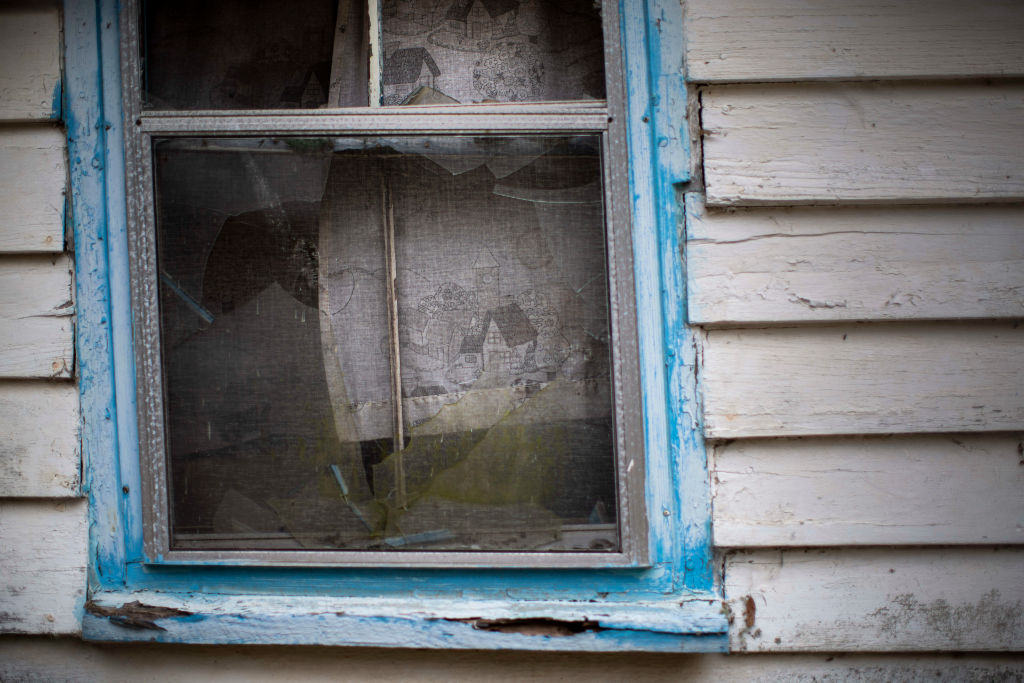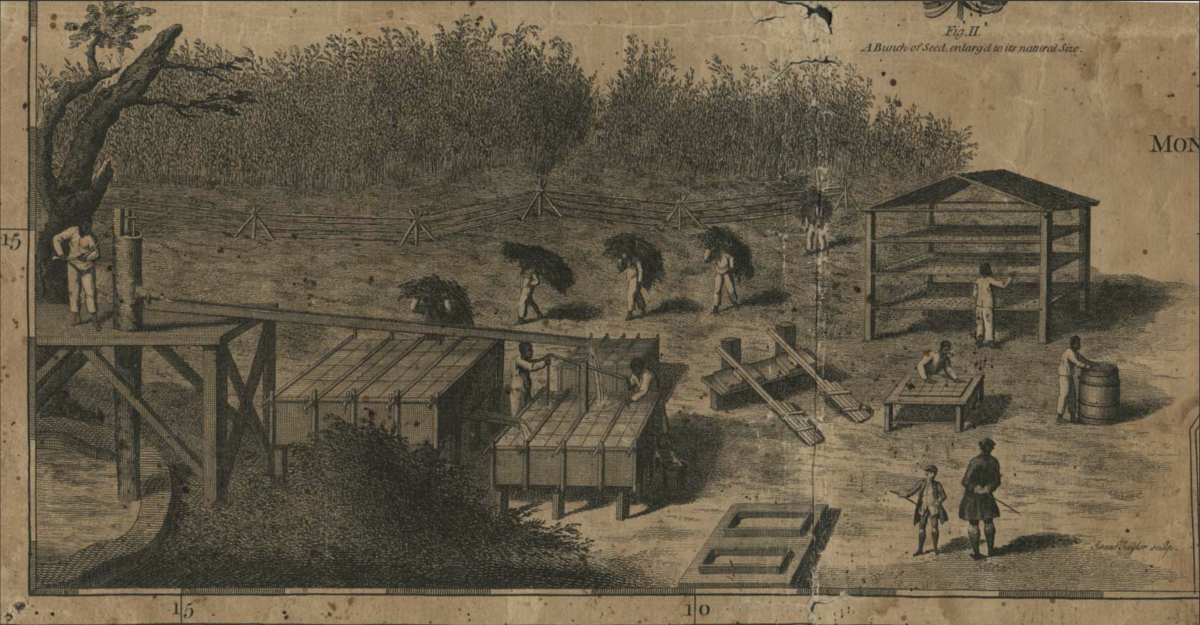Maxwell Museum Blog
Black History Month: Indigo, Haint, and Graphic Design at the Maxwell
By Katie Conley, Graphics - Maxwell Museum of Anthropology
When the curator of exhibits at the Maxwell, Devorah Romanek asked me to begin designing materials for an upcoming exhibit for black history month highlighting Gullah/Geechee basketry, I was immediately excited. Not only was this exhibit highlighting basketry created by artists in my hometown of Charleston, South Carolina, but this was an opportunity to incorporate some of my own research on color – and specifically the color blue, into the exhibit’s design.

A Vat of indigo blue dye in production. Wikimedia Commons (CC 3.0)
I spent an entire year as an undergraduate student in the fine arts program at UNM immersing myself completely in the history of the color blue, and my personal relationship to its complicated history in Charleston. I had a pile of books and articles on the color’s history and even a vat of dye in the backyard that I kept feeding for months. I was obsessed with the color – and through this obsession was forced to relearn some histories that were reiterated repeatedly in my South Carolina education. I had to acknowledge that the history of the color blue, and my personal associations with the color were complex.

An abandoned house from the Depression era with haint blue around the window, on Wadmalaw Island, South Carolina. (Melina Mara/The Washington Post)
Through my research I learned why my family’s front porch ceiling, and so many others were painted a pastel robin’s egg shade of blue. I learned that the historical name for the color is haint blue, the word haint deriving from the historically complex language and dialect of the Gullah/Geechee people in the low country. The color was originally created using indigo dye and was used by African slaves to paint their plantation cabins. The color, which was intended to resemble the color of water, was tied to their spiritual beliefs, brought over from Western Africa, about spirits they referred to as haints. It was believed that painting their homes with this shade of blue would confuse the spirits, who were not able to cross over water, and bar them from entering their homes. The tradition of painting porches blue originated as a means for enslaved Africans to preserve and continue their traditions in their new home. Over time, the color has become a staple and tradition of low country design.

A 1773 depiction of indigo harvest and processing and St. Stephens Parish. Charleston County Public Library
My research also forced me to relearn the history of indigo dye in the Carolinas – a history which was reinforced over and over again in my South Carolina education. From a young age, I was taught that an educated, wealthy white woman named Eliza Lucas Pinckney invented the Caroliniana strain of Indigo. Her development of the Caroliniana strain of indigo, which was adept to the Winter climates of the low country was hugely celebrated in South Carolina curriculum and credited as being a primary reason for the region’s success and generational wealth. It wasn’t until embarking on this journey of re-connecting with the history of indigo in the Carolina’s that I began questioning this history. I quickly learned the flaws in this narrative. Contrary to what I had been taught, I learned that it was the Pinckney plantation slaves, who brought their knowledge and experience cultivating indigo and developing the dye which were responsible for the development of this indigo strain. Without their knowledge and experience, the Caroliniana strain of indigo would have certainly never existed, and other strains, which are traditionally grown in tropical climates with mild winters, would have failed.
With everything I have learned about the color blue and its relationship to Gullah/Geechee culture and South Carolina history, I knew it was important to incorporate into this exhibition. Although this exhibition isn’t about indigo, or blue, I wanted to be intentional in the exhibits design. I wanted to be able to tie a key element of the design, color, back to the Gullah/Geechee culture which this exhibit seeks to highlight.

